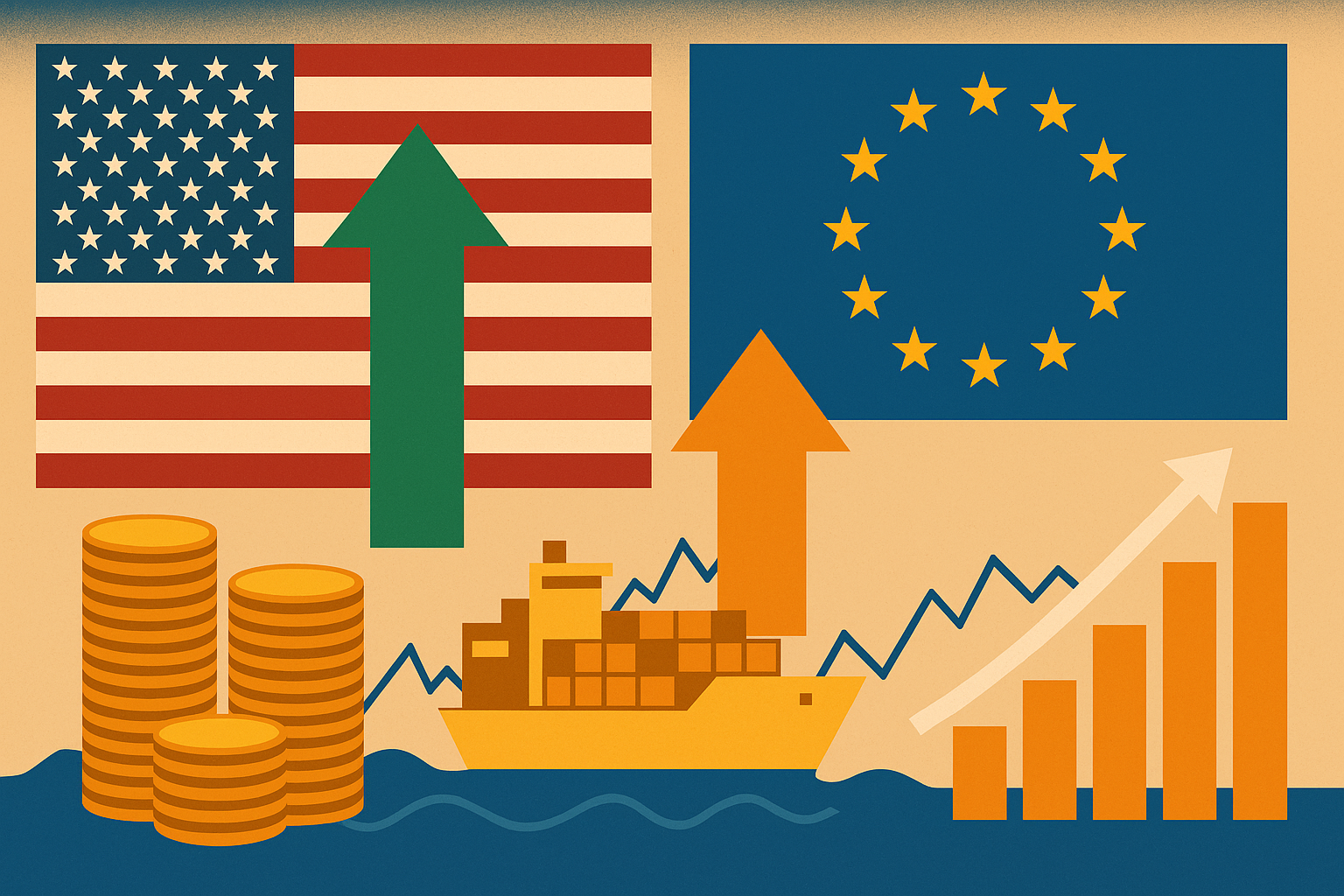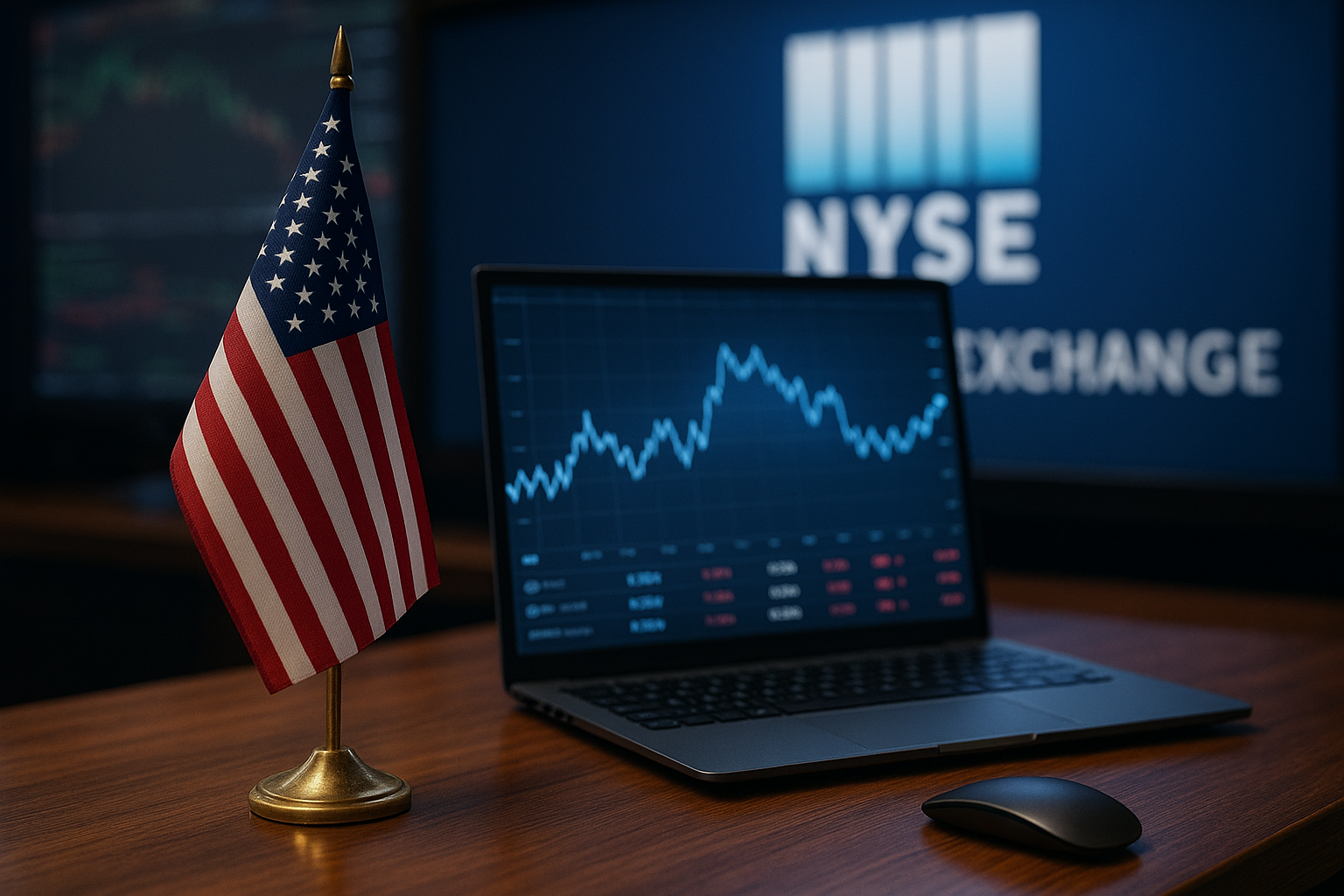Just as global markets were bracing for another round of disruptive tariffs, Washington and Brussels delivered a rare dose of relief. On July 28, the U.S. and European Union unveiled a broad trade agreement that slashes proposed tariffs on EU imports—previously feared to hit 30–50%—down to a more measured 15%. In return, the EU committed to over $600 billion in direct investment into U.S. infrastructure, clean energy, and strategic sectors over the next five years.
The news sparked an immediate bounce in equity futures and helped stabilize investor sentiment after weeks of uncertainty surrounding trade tensions, particularly with the backdrop of escalating rhetoric from the Trump administration. While questions remain about how this deal will be enforced and whether it signals a broader easing of protectionist policies, the short-term message is clear: for now, the worst-case trade scenario has been avoided.
Repricing Risk in a Globalized World
Markets had been jittery in recent weeks, especially after President Trump’s July 20 address hinted at escalating tariffs aimed at “balancing unfair trade flows.” Sectors like autos, luxury goods, and metals saw volatility spike, with European exporters and U.S. importers caught in the crossfire of speculation.
However, Reuters reports that the final framework de-escalates tensions and restores predictability to transatlantic trade. Instead of blanket tariffs, the deal focuses on sector-specific compromises, notably:
- A 15% flat tariff on most EU goods, replacing earlier threats of 30–50%.
- Tariff exemptions for clean energy technology, aircraft components, and certain industrial metals used in U.S. manufacturing.
- EU investment pledges totaling $600 billion, targeted toward U.S. energy, semiconductor fabrication, EV supply chains, and digital infrastructure.
According to Morgan Stanley, this deal “materially improves visibility for global industrial supply chains, while dampening fears of retaliatory measures from the EU.”
Why This Matters for Investors
At a time when equity markets are already pricing in optimistic AI-fueled earnings and tech-driven growth, any macro-level shock—particularly one affecting global trade—could derail momentum. This agreement helps protect risk assets, especially in globally exposed sectors like:
- Industrial machinery (Caterpillar, Deere & Co.)
- Aerospace (Boeing, Airbus, Raytheon)
- Luxury goods and autos (LVMH, BMW, Mercedes, Ford)
It also reinforces bullish sentiment in U.S. infrastructure and green energy equities, as Europe’s investment flows are expected to back multiple large-scale initiatives, from EV charging networks to hydrogen hubs.
Moreover, the timing is critical. With Fed policy uncertainty, China-U.S. trade talks resuming next month, and a heavy Q2 earnings week underway, the deal removes a key geopolitical overhang.
Future Trends to Watch
1. Sectoral Winners and Losers
Steel and aluminum producers may still face localized tariffs, as the U.S. retains leverage in certain politically sensitive areas. However, downstream industries—such as construction, autos, and aerospace—stand to gain from clearer sourcing agreements and cost predictability.
2. EU Capital Deployment
Tracking the actual allocation of the pledged EU funds will be crucial. Sectors flagged for early investment include AI infrastructure, chip manufacturing (possibly via Intel and TSMC U.S. fabs), and grid modernization.
3. U.S.–China Trade Implications
Analysts at Barclays note that this deal may set a template for how the U.S. approaches ongoing China negotiations—emphasizing bilateral investment over brute tariffs.
4. 2025 Election Rhetoric
With tariffs a central campaign issue, investors should prepare for political volatility. While the EU deal may offer short-term relief, future reversals can’t be ruled out depending on polling shifts and legislative resistance.
Key Investment Insight
Investors should use this window of trade stability to review their global exposure. Consider rotating into industrials and infrastructure-linked ETFs, and increasing allocation to companies with strong U.S.–EU operational bridges.
Stocks like General Electric, Honeywell, ABB, and Siemens—all deeply tied to transatlantic energy and automation ecosystems—could benefit from this alignment. Meanwhile, monitor commodity-sensitive sectors for further developments tied to bilateral trade enforcement and China’s next move.
Geopolitical uncertainty has been a top risk factor in 2025, but this U.S.–EU agreement gives markets a breather. While structural questions remain, one thing is certain: capital is once again on the move—and investors who follow the flow stand to gain.
For daily updates on market-moving developments and global macro trends, stay informed with MoneyNews.Today—your trusted source for real-time investor intelligence.





